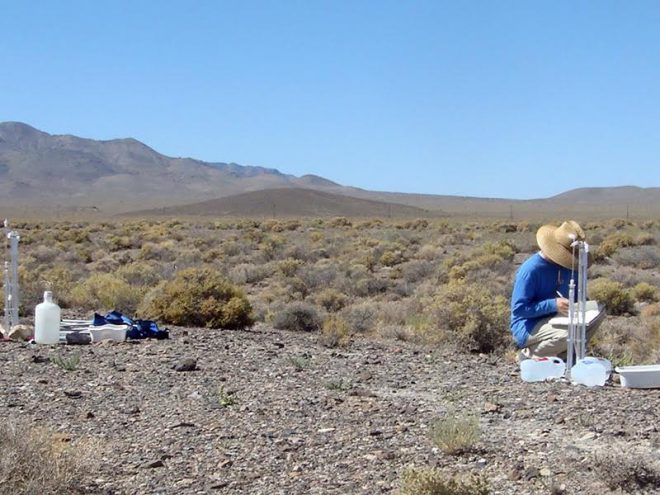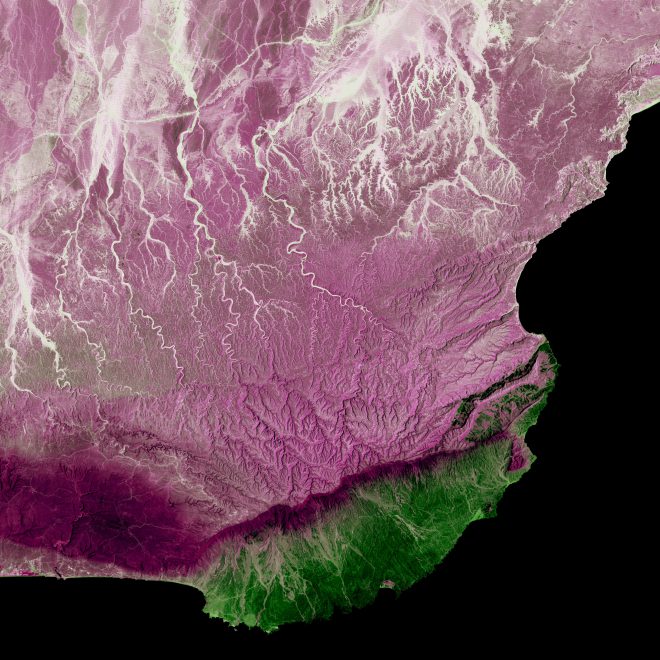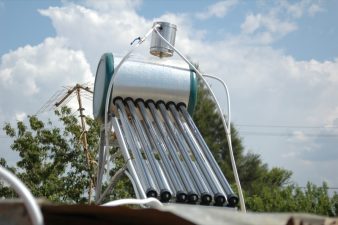
Solar power plants in the desert make use of wasted land, right? Think again. The desert soil has a complex network of pores in its unique soil. This takes hundreds, maybe thousands of years to create. Disturbing the desert may have implications on desertification, flash floods and who knows what else.
While it might look like deserts don’t have soil, they do. It’s just very different from those kinds of soil found anywhere else. Extreme temperatures, very little water and limited plant matter to degrade on the surface make an unusual environment. With little dead plant material to decompose and create a rich layer of organic matter, desert soils are unique. And they need to be protected, finds new research. This is especially important for renewable energy installations being built in the desert, like solar power plants or military installations. For almost ever, people believed that deserts don’t harbor soil or life, but they really do.
It’s just different than what we know and the answers to keep deserts alive are in the pores of the desert soil.

It takes thousands of years to create and can be wiped out by one dump-truck. Desert soils are fragile eco-systems. Look to the soil. Researchers measure soil infiltration in desert soils near Alkali Lake, NV. Credit: Judith Turk
Judith Turk, an assistant professor at the University of Nebraska-Lincoln in the United States, studies the top layer of desert soils, called the vesicular horizon. This surface layer of the soil is common in deserts and contains pores – or tiny holes – of different shapes, called vesicles and vughs.
“These horizons are important because of their role in many processes,” Turk says. “Vesicular horizons determine how much water soaks into the soil and how much runs off. Since they occur in deserts, they control the distribution of the most limiting resource, which is water.”
Vesicular pores are spherical, look a bit like bubbles, and are not connected to each other. Vughs are similar but more irregular in shape, almost like a clump of bubbles that have not fully separated from each other.
Predict impact on floodwater runoff, flash floods
Turk wanted to learn how these horizons form across different desert soils. In their most recent experiment, they chose small plots of the soils and took samples. They then crushed the soil so the formation of pores would have to start from scratch. They checked the porosity of the soils over the course of a year to compare.
“First, we found that infiltration rates were lowered as a result of disturbance,” Turk explains. “This would normally not be surprising, since disturbance compacts the soil, reducing porosity, and breaking up the pore networks that water flows through.
“However, the pores in V horizons are different,” she says. “Most of the pores are not connected with each other and therefore contribute little to permeability of the soil. So, we weren’t sure how disturbance would affect these horizons.”
She adds that what did surprise them was how a soil’s texture determined how well its porosity in this soil layer came back. They assumed that a soil with more silt would be better for vesicle formation but found vesicles formed more rapidly in relatively sandy soils.

“The capacity for vesicular pores to reform within a year after the V horizon is disturbed is something that is interesting,” Turk says. “The post-disturbance V horizons being thinner with smaller pores tells us that what we observed in the undisturbed soils takes time to form.”
It is important to study these soils because semi-arid lands cover about one third of the planet’s land area. Soils with V horizons are often disturbed because populations of cities in arid environments are growing. There is construction of solar and wind farms, and these areas are popular for military exercises.

Much of Oman is desert, but the Arabian Sea coast in the Dhofar region represents a startling difference in climate. This coastal region catches the monsoon rains, or khareef, during the summer months. Drenching rains fall primarily on the mountainous ridge that separates the lush, fertile areas along the coast from the arid interior, recharging streams, waterfalls, and springs that provide plentiful water supplies in the fertile lowlands for the remainder of the year.
It’s vital to take the researchers’ findings into account when planning to disturb the soil.
“Many people are surprised to learn that there are interesting soils in the desert,” she says. “When I moved to California for graduate school, I fell in love with the desert lands of the western US. In the desert you can see the land surface and it’s easy to imagine the processes that have built the soil landscapes that we see today.”



